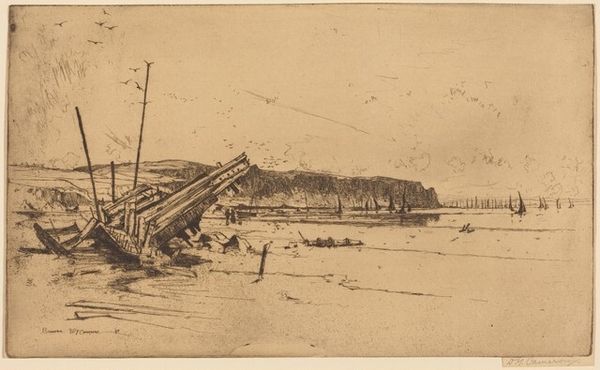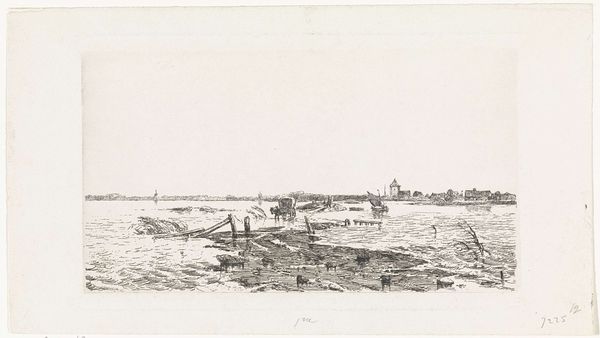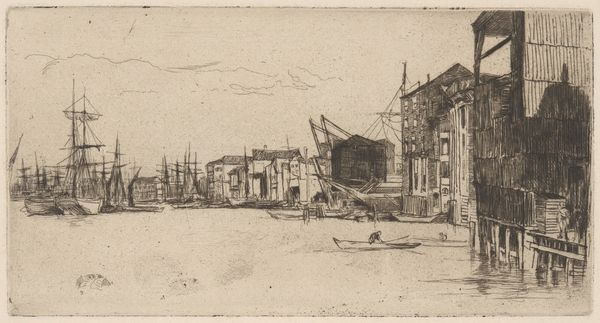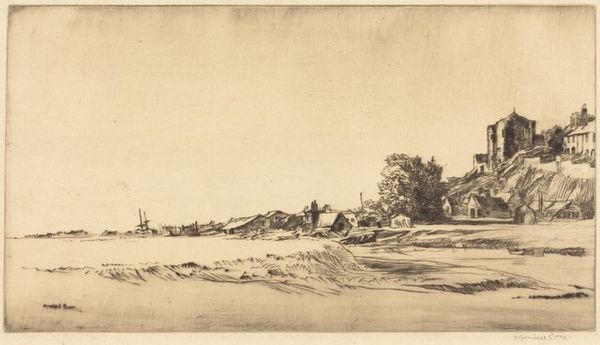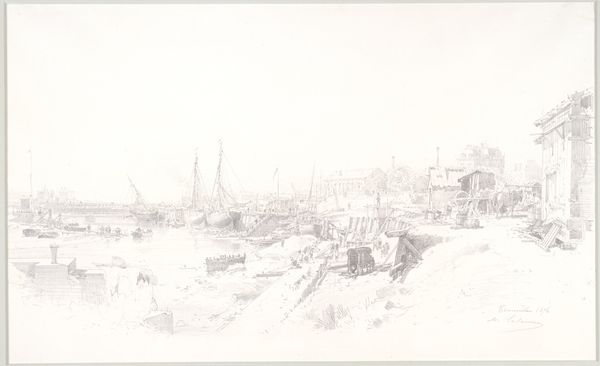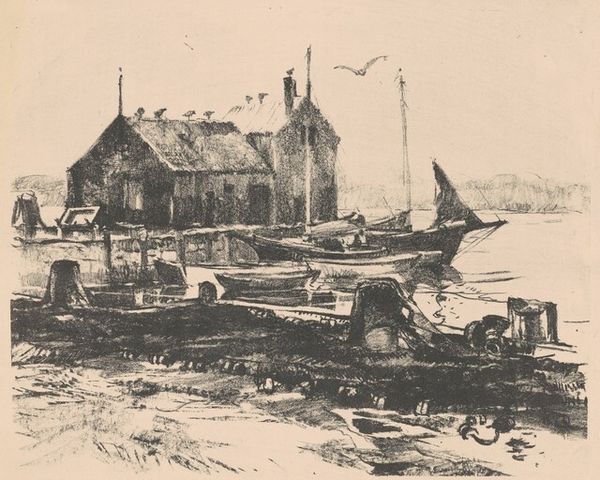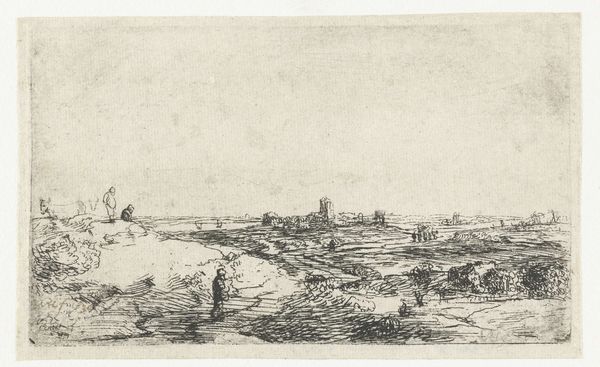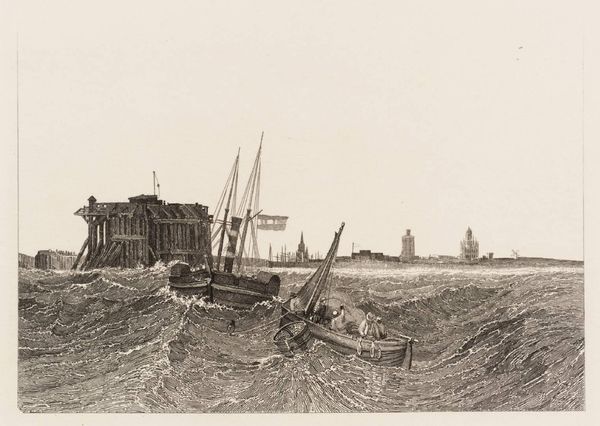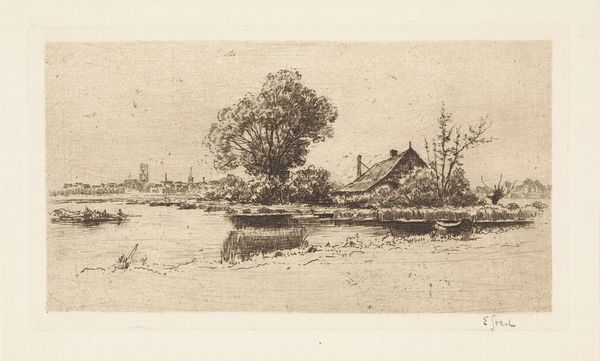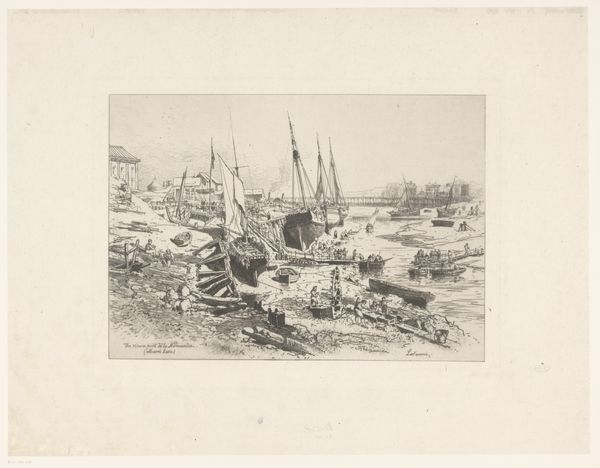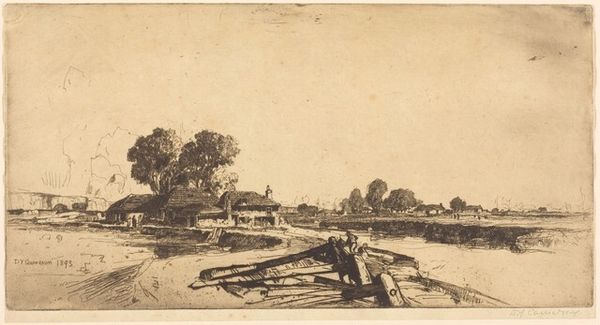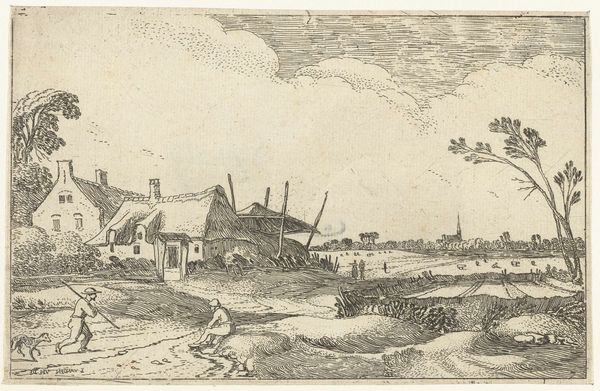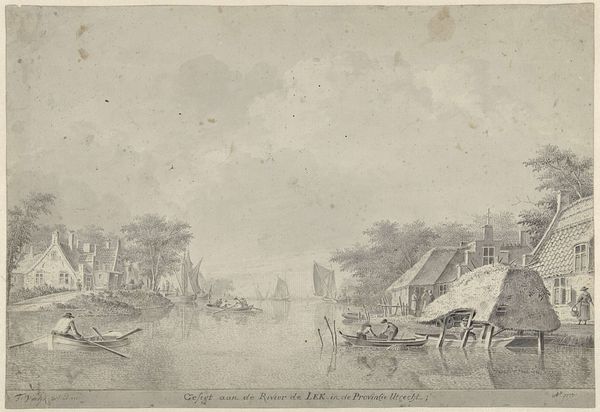
print, etching
#
dutch-golden-age
# print
#
etching
#
landscape
Copyright: National Gallery of Art: CC0 1.0
David Young Cameron created ‘A Dutch Village’ using etching, a printmaking technique that uses acid to corrode the unprotected parts of a metal surface to create a design. The eye is drawn to the village which sits nestled in a landscape of delicate, muted tones. The composition reveals an interplay of light and shadow. Notice how Cameron employs the etching technique to investigate structure. The lines are not just representational but are deployed as a system, a kind of semiotic network where each stroke communicates information about form, texture, and light. The thatched roofs and the water's surface shimmer with reflected light thanks to the meticulous arrangement of marks. Look closely at the architectural elements, which are rendered with precision. The church tower stands as a vertical anchor, contrasting with the horizontal spread of the village. This etching operates as a system of signs, creating a village that feels both concrete and dreamlike. It invites viewers to see not just a place, but to interpret the very nature of seeing itself.
Comments
No comments
Be the first to comment and join the conversation on the ultimate creative platform.
